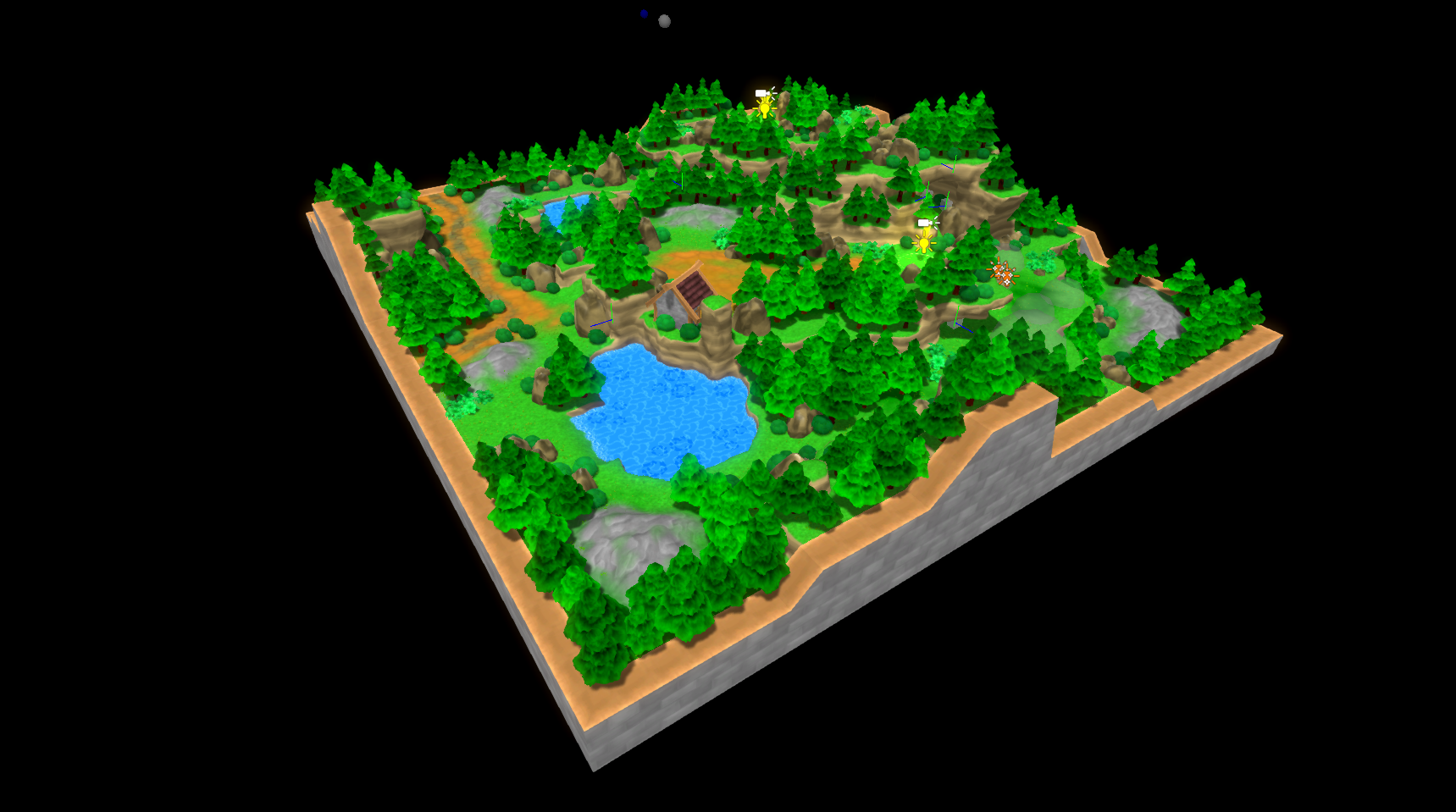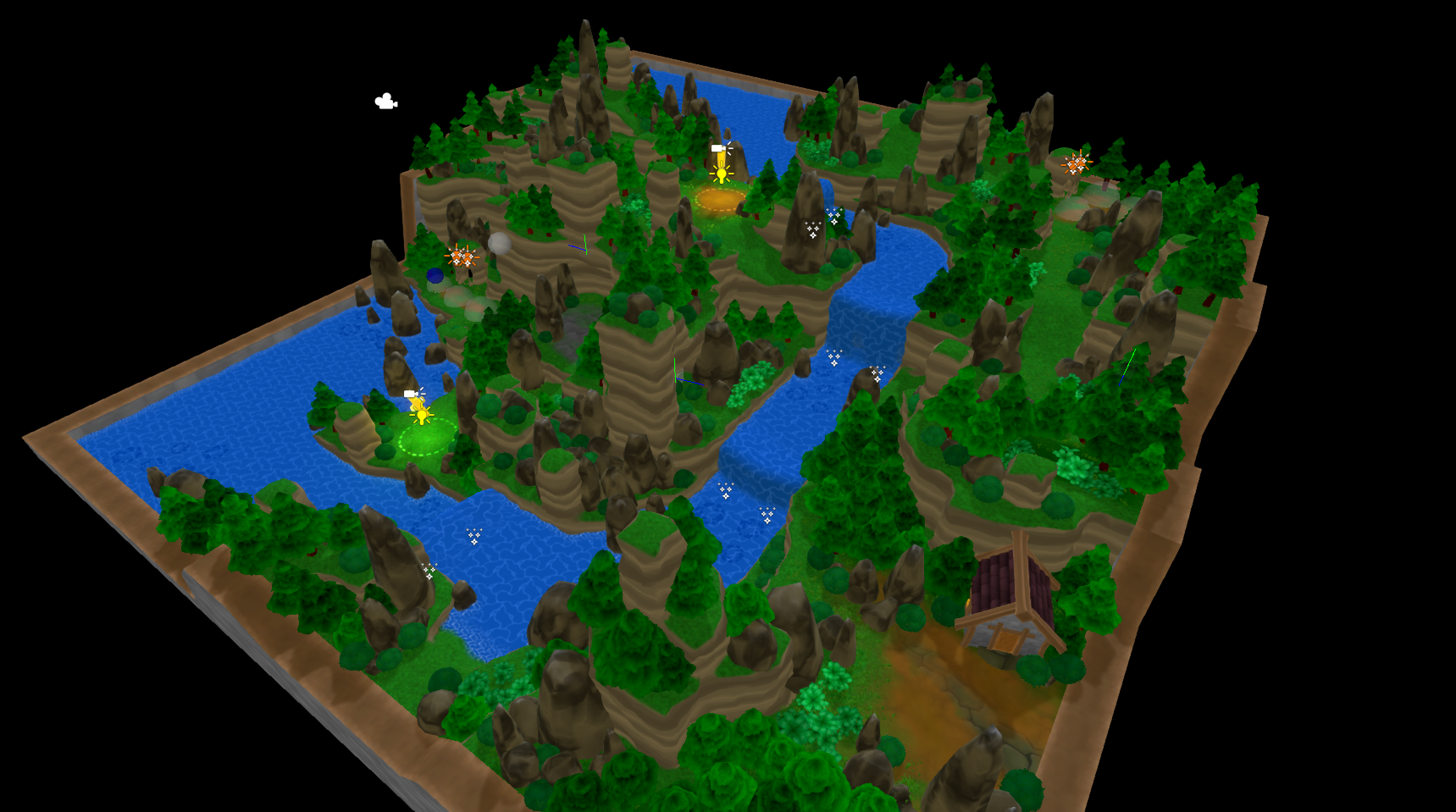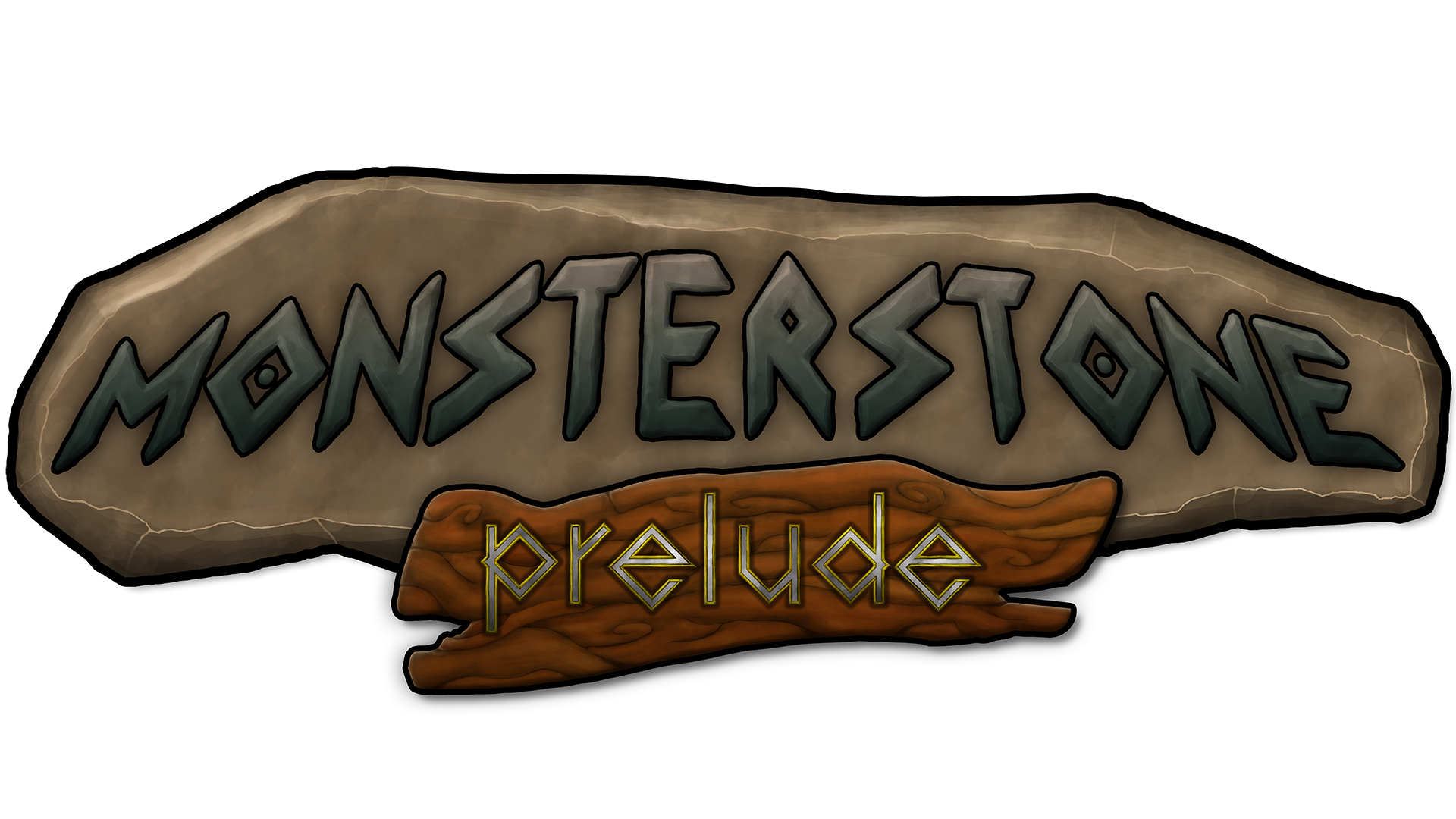9 new levels are almost ready
I am getting close to being done with 9 new levels for Monsterstone: Prelude, and I am excited to share what I made so far.
A few weeks back, I shared some images of the basic terrain being done for some of the new levels. Now, I can share the same levels, but with trees, rocks, bushes, fish and any other resources needed for this exploration and resource collection game. There are still a few things missing, such as new models and prefabs for crystal resources, and I still need to set up proper materials for the water surfaces. A bit more important, is that I also need to create quests with rewards for each of the 9 new levels, so that there are more motivations to “save” the levels and lock it out of the rotation.
I am pretty happy with the result so far. It feels good to finally have a diverse collection of tier 1 levels, as it means I can also start balancing the game progression and level contents. The current goal is to have a more cohesive and diverse tier 1 level pool, so that there are more decisions to be made as a player. Having more level variation will also make the game less repetitive, to improve the exploration aspect of Monsterstone: Prelude.
The new plant models I made look great in these new environments, though I still want to eventually tweak the texture contrast, color, etc.as they seem a bit too “bright” at the moment. I have also added the stone and wood frames around each level, which is actually 3D modeled within Unity using Probuilder! I am doing it within Unity, because I can then account for places where I increased the height of the terrain using terrain sculpting tools. Less fumbling in the dark and guesswork is always preferable. Filling in the levels took a little longer than expected, because I ran into extra tasks, such as updating Probuilder to the new version that now comes with Unity. I also cleaned up parts of the project related to the terrain plate materials, as the newer version of Unity now has layer materials for each texture applied. Those were auto converted from the old way it worked, which meant I suddenly had a folder with many duplicates of various materials, that also had autogenerated postfixes consisting of a long string of letters and numbers. Because I managed to remove some of the wrong materials, I had to go back through all my levels and replace any broken materials too. I much prefer this approach though, as it makes it easier to manage the materials used for all terrain plates, and keep everything consistent. It also means that if I need to change a specific texture used across all my levels, I only have to change it in one material, and it will apply everywhere.
For the crystals, I am planning on simply making merged models out of the old crystal models, similar to how I made the new plants. It ensures that it is easier to hit a specific crystal, while still ensuring that they create ample ground cover. Another benefit is that there will be less individual entities, which improves performance. In one of my test levels, I have a cave where I added lights to where the yellow crystals are. It looks nice when the level is untouched, but the lights are not disabled after the crystals are harvested, which makes it look kinda weird when all resources are exploited. I have been thinking about making the light's intensity be dependent on nearby crystals that get hooked up to it. It is easier to just add a light source to each crystal, but pixel lights are pretty expensive in those quantities, so I would rather just have multiple crystals “share” 1 light source, and use code logic to gradually dim it until all crystals are gone. It does mean that it will require more setup on my end though, as each crystal area will need extra steps of work for the lights to work, so I will see how bad individual light sources will be before taking the plunge. As for the water, it is simply a matter of creating new materials where the water moves in appropriate directions, as for now, I have just applied a generic water material. I did consider implementing flow mapping into my water shader at some point, but it seemed a bit more complex than I cared for, as it would likely require some kind of in-Unity editor to see the adjustments realtime. For my shader, I can currently adjust the gerstner wave settings to move in another direction, and then create different standardized materials for the primary direction north, south, east, west, north-east, north-west, south-west and south-east. I do also use different colors for different bodies of water though, such as ocean water being a darker tint of blue, while swamp water is more green, which does mean that for each color variant, I would need another 8 primary variations. And that is just the direction, but I can also adjust the wave intensity, such as what I am doing for ocean water, where waves are a lot larger, and the water “moves faster”. Plenty of work still to be done, but I am getting there.




Get MonsterStone: Prelude (Early Alpha)
MonsterStone: Prelude (Early Alpha)
A 3rd person adventure game, where you explore levels from a top-down perspective, collect resources and invest them
| Status | Prototype |
| Author | BendedRules |
| Genre | Adventure |
| Tags | 3D, Crafting, Exploration, Fantasy, Incremental, Management, Singleplayer, Third Person |
| Languages | English |
More posts
- New plant models for temperate biome levelsFeb 04, 2023
- Ruins terrain feature and more forest levels!Jan 21, 2023
- Last year, and what's next for 2023Jan 21, 2023
- Launched into Early Access, Monsterstone: Prelude is now available!Sep 13, 2022
- Early Access and the future for Monsterstone: PreludeAug 26, 2022
- Updated demo with bug fixesJan 27, 2022
- Improved performance and title artwork finalizationJan 23, 2020

Leave a comment
Log in with itch.io to leave a comment.